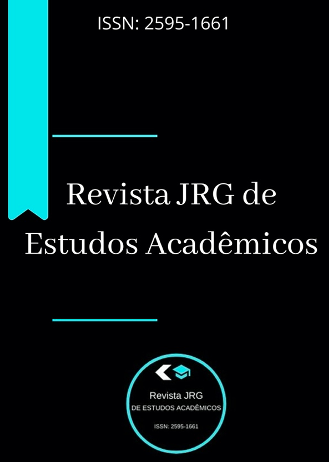PHYSIOTHERAPEUTIC INTERVENTION IN TREATING TEMPOROMANDIBULAR DISORDERS: A SYSTEMATIC REVIEW
DOI:
https://doi.org/10.5281/zenodo.4451231Keywords:
TEMPOROMANDIBULAR JOINT. PHYSIOTHERAPY. TEMPOROMANDIBULAR JOINT DISORDERS.Abstract
Introduction: The Temporomandibular Joint (TMJ) is formed by a set of anatomical structures that establish a connection between the temporal bone and the mandible. This joint is susceptible to pathological variations leading to disorder such as temporomandibular dysfunction. Temporomandibular dysfunction (TMD) is defined by the pathological alteration that impairs the temporomandibular joint (TMJ), having potential to affect the masticatory muscles and the stomatognathic system. The physiotherapeutic intervention aims to ameliorate musculoskeletal pain, reduce inflammation and spasms, gain or maintain range of motion, recover the function of the masticatory system and promote the re-education of the patient to improve the quality of life. Objective: In this way the objective of this study was to analyze the scientific evidences about the physical therapy treatment in the temporomandibular disorder. Methods: Electronic searches were carried out in PubMed, Lilacs and Scielo databases to identify the scientific articles indexed and published in the years 2011 to 2018. Twenty articles were selected after analysis and 11 were used. Results: The results obtained in this study , it is noted that the physiotherapeutic resources bring good results in patients with TMD, reducing pain and increasing range of motion. Conclusion: According to the results presented in this study, it was concluded that the physiotherapeutic resources have good results in patients with TMD.
Downloads
References
Pelicioli M, Myra RS, Florianovicz VC, Batista JS. Tratamento fisioterapêutico nas desordens temporomandibulares. Rev. dorvol.18no. 4São PauloOct./Dec.2017. http://dx.doi.org/10.5935/1806-0013.20170129.
Priebe M, Antunes AGF, Corrêa ECR. Estabilidade dos efeitos da fisioterapia na disfunção temporomandibular. Rev. dorvol.16no.1São PauloJan./Mar.2015. http://dx.doi.org/10.5935/1806-0013.20150002 .
Rodrigues CA, Magri LV, Melchior MO, Mazzetto MO. Avaliação do impacto na qualidade de vida de pacientes com disfunção temporomandibular. Rev. dorvol.16no.3São PauloJuly/Sept.2015. http://dx.doi.org/10.5935/1806- 0013.20150036.
Aldiéris A, Pesqueira, Paulo RJ Zuim, Douglas R. Monteiro, Paula Do Prado Ribeiro, Alício R. Garcia. Relação entre fatores psicológicos e sintomas de DTM em estudantes universitários de graduação. Acta odontol.latinoam.vol.23 no.3 Buenos Aires dic.2010.
Girard J, Parkman K, Nat C. The Effects of Dry Needling on Temporomandibular Disorder: A Systematic Review. Review Article Published: 26 Feb, 2018
Freire AB, Nardi AT, Boufleur J, Chiodelli L, Pasinato F, Corrêa ECR. Abordagem fisioterapêutica multimodal: efeitos no diagnóstico e gravidade da disfunção temporomandibular. Fisioter.mov.vol.27 no.2 Curitiba abril / junho 2014. http://dx.doi.org/10.1590/0103-5150.027.002.AO07.
Porporatti AL, Costa YM, Barbosa JS, Bonjardim LR, Conti PCR. Protocolos de acupuntura para o tratamento da disfunção temporomandibular. Rev. dorvol.16no.1São PauloJan./Mar.2015. http://dx.doi.org/10.5935/1806- 0013.20150011.
Franco AL, Zamperini CA, Salata DC, Silva EC, Junior WA, Camparis CM. Fisioterapia no tratamento da dor orofacial de pacientes com disfunçãotemporomandibular crônica. Rev Cubana Estomatolv.48n.1Ciudad de La Habanaene.-mar.2011.
Viana MO, Olegario NBC, Viana MO, Silva GPF, Santos JLF, Carvalho STRF. Efeito de um protocolo de fisioterapia na qualidade de vida relacionada à saúde de pacientes com disfunção temporomandibular. Fisioter.mov.vol.29 no.3 Curitiba julho / setembro2016. http://dx.doi.org/10.1590/1980-5918.029.003.AO08.
Torres F, Campos LG, Fillipini HF, Weigert KL, Vecchia GFD. Efeitos dos tratamentos fisioterapêutico e odontológico em pacientes com disfunção temporomandibular. Fisioter. Mov., Curitiba, v. 25, n. 1, p. 117-125, jan./mar. 2012
Borin GS, Corrêa EC, Silva AMT, Milanesi JM. Acupuntura como recurso terapêutico na dor e na gravidade da desordem temporomandibular. Fisioterapia e Pesquisa, São Paulo, v.18, n.3, p. 217-22 , jul/set. 2011











































